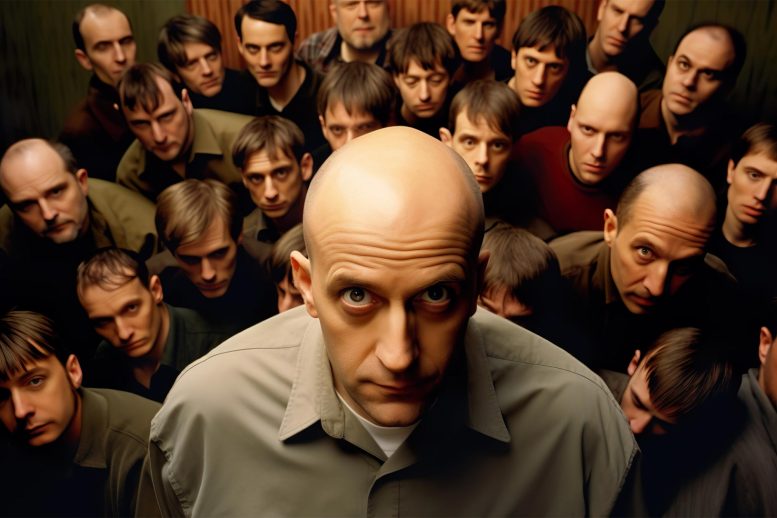
Scientists, led by the University of California, Irvine, have identified the mechanism by which senescent pigment cells in the skin stimulate hair growth in skin moles, or nevi. The study revealed the crucial role of osteopontin and CD44 molecules in activating hair growth within hairy skin nevi, despite the presence of a high number of senescent pigment cells. This discovery contradicts the commonly held belief that senescent cells, which are usually associated with the aging process, are detrimental to regeneration.
Findings may offer a road map for the next generation of therapies for androgenetic alopecia.
Researchers have discovered that senescent pigment cells in skin moles can stimulate robust hair growth, challenging the belief that these cells impede regeneration. The study showed that molecules osteopontin and CD44 play a key role in this process, potentially opening new avenues for therapies for common hair loss conditions.
The process by which aged, or senescent, pigment-making cells in the skin cause significant growth of hair inside skin moles, called nevi, has been identified by a research team led by the University of California, Irvine. The discovery may offer a road map for an entirely new generation of molecular therapies for androgenetic alopecia, a common form of hair loss in both women and men.
The study, published on June 21 in the journal Nature, describes the essential role that the osteopontin and CD44 molecules play in activating hair growth inside hairy skin nevi. These skin nevi accumulate particularly large numbers of senescent pigment cells and yet display very robust hair growth.
Androgenetic alopecia, also known as male or female pattern baldness, is the most common type of hair loss affecting both men and women. It’s a genetic condition that involves the progressive thinning of hair follicles, which leads to the production of finer and shorter hair strands over time. In men, this condition often presents as a receding hairline and balding on the top of the head, while in women, it typically manifests as overall hair thinning, especially at the crown of the head.
“We found that senescent pigment cells produce large quantities of a specific signaling molecule called osteopontin, which causes normally dormant and diminutive hair follicles to activate their stem cells for robust growth of long and thick hairs,” said lead corresponding author Maksim Plikus, UCI professor of developmental and cell biology. “Senescent cells are typically viewed as detrimental to regeneration and are thought to drive the aging process as they accumulate in tissues throughout the body, but our research clearly shows that cellular senescence has a positive side to it.”
The growth of hair follicles is well regulated by stem cell activation; these cells divide, enabling follicles to produce new hair in a cyclical manner. After each bout of hair growth, there’s a period of dormancy, during which the follicle’s stem cells remain inactive until the next cycle begins.
The study involved mouse models with pigmented skin spots that had hyperactivated hair stem cells and displayed accelerated hair growth, strongly resembling the clinical observations documented in human hairy skin nevi. Further detailed analysis of senescent pigment cells and the nearby hair stem cells revealed that the former produced high levels of a signaling molecule called osteopontin, for which hair stem cells had a matching receptor molecule called CD44. Upon molecular interaction between osteopontin and CD44, hair stem cells became activated, resulting in robust hair growth.
To confirm the leading role of osteopontin and CD44 in the process, mouse models lacking either one of these genes were studied; they exhibited significantly slower hair growth. The effect of osteopontin on hair growth has also been confirmed via hairy skin nevi samples collected from humans.
“Our findings provide qualitatively new insights into the relationship between senescent cells and tissue’s own stem cells and reveal positive effects of senescent cells on hair follicle stem cells,” said first and co-corresponding author Xiaojie Wang, UCI associate specialist in developmental and cell biology. “As we learn more, that information can potentially be harnessed to develop new therapies that target properties of senescent cells and treat a wide range of regenerative disorders, including common hair loss.”
The team included healthcare professionals and academics from the U.S., China, France, Germany, Korea, Japan, and Taiwan.
“In addition to osteopontin and CD44, we’re looking deeper into other molecules present in hairy skin nevi and their ability to induce hair growth. It’s likely that our continued research will identify additional potent activators,” Plikus said.
Reference: “Signalling by senescent melanocytes hyperactivates hair growth” by Xiaojie Wang, Raul Ramos, Anne Q. Phan, Kosuke Yamaga, Jessica L. Flesher, Shan Jiang, Ji Won Oh, Suoqin Jin, Sohail Jahid, Chen-Hsiang Kuan, Truman Kt Nguyen, Heidi Y. Liang, Nitish Udupi Shettigar, Renzhi Hou, Kevin H. Tran, Andrew Nguyen, Kimberly N. Vu, Jennie L. Phung, Jonard P. Ingal, Katelyn M. Levitt, Xiaoling Cao, Yingzi Liu, Zhili Deng, Nobuhiko Taguchi, Vanessa M. Scarfone, Guangfang Wang, Kara Nicole Paolilli, Xiaoyang Wang, Christian F. Guerrero-Juarez, Ryan T. Davis, Elyse Noelani Greenberg, Rolando Ruiz-Vega, Priya Vasudeva, Rabi Murad, Lily Halida Putri Widyastuti, Hye-Lim Lee, Kevin J. McElwee, Alain-Pierre Gadeau, Devon A. Lawson, Bogi Andersen, Ali Mortazavi, Zhengquan Yu, Qing Nie, Takahiro Kunisada, Michael Karin, Jan Tuckermann, Jeffrey D. Esko, Anand K. Ganesan, Ji Li and Maksim V. Plikus, 21 June 2023, Nature.
DOI: https://doi.org/10.1038/s41586-023-06172-8
This work was supported in part by LEO Foundation grants LF-AW-RAM-19-400008 and LF-OC-20-000611; Chan Zuckerberg Initiative grant AN-0000000062; W.M. Keck Foundation grant WMKF-5634988; National Science Foundation grants DMS1951144 and DMS1763272; and National Institutes of Health grants U01-AR073159, R01-AR079470, R01-AR079150, R21-AR078939 and P30-AR075047. Additional backing came from Simons Foundation grant 594598 and California Institute for Regenerative Medicine Shared Research Laboratory Grant CL1-00520-1.2.

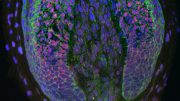
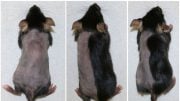

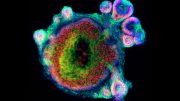
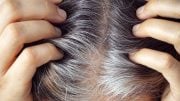
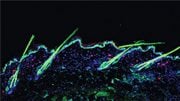


Aaaaaaaaaaaaaaaaaaaaaaaaaaaaaaaaaaaaaaaah!
What ever happened to that drug that was designed to treat something else, but restored color to grey hair as a side effect? I read an article about it several years ago, but they wouldn’t say what the drug was as apparently it was something not safe for general use, but the scientists thought perhaps it wasn’t the main ingredient that brought back hair color in like 87% of the people that used it. Then, of course, I/we never heard anything about it EVER again. One wonders if the hair coloring industry made sure it wasn’t investigated further as it would wipe out a lot of sales of old age hair coloring products.
I’d guess that Big Pharma would be favorite in a tussle with the hair-color industry, Albus! There must be some other reason.
Maybe, but I don’t know how interested Big Pharma is in products that are “use once and never again” as this color restoring effect was reportedly more or less permanent, not something that would require an ongoing prescription, unlike hair coloring which becomes very expensive and needed on a regular basis to maintain the color. Despite “grey” being promoted as “distinguished” by some, the fact is we associate it with “old” and thus it’s a negative connotation particularly for women when dating at an older age.
Let’s face it. Big Pharma doesn’t want “cures” for ANYTHING. They want “managed conditions” that require ongoing treatment forever so you you keep paying out $$$$$$$$ the rest of your life. That’s what keeps their shareholders happy and you miserable. And it’s only going to get worse over time. AI might help find cures, but it’s just as likely to be used to find “treatments” that don’t cure, but keep you coming back for more.
I didn’t realise it was a one-and-done thing, Albus. You evidently know more about this than I do – which, frankly, is not difficult. I’d be quite happy if I could grow anough hair to comb it over my bald patch again, which I had to quit doing in 2009 because of all the laughter.
Really have yo write “women and men” no matter how awkward it sounds. 🤣🤣 Who ever wrote this must be a woke feminist.
I’ll volunteer for any trials
Looking forward to see hair re growth research and results ,india has huge problem even globally , there are more than 2 dozen oil companies making herbal treatments and making money
Hoping for positive results with great expectations, half our nation is going bald at a very young age , wish you guys the best ,
Keep it up
Too much hair fall & scalp little shinning
Looking forward to be a beneficial of the great minds result on reversing baldness.
Thank for this breakthrough
June 25th 2023
I’m the only.male out of my family that is losing hair. I’m up for free trials.
innovative methods to be overwhelmed after success and without side effects. Workout age not known. Regards
Looking forward to be beneficial for reverse baldness.
Good. If this method is effective,I will be a volunteer for free trial
I read something about rubbing semen on your scalp to restore hair growth, it has all the nutrients and growth factors in. I have been doing this for years and my hair is full and lush, I also had several false pregnancies too but I think that may just be a side effect.._